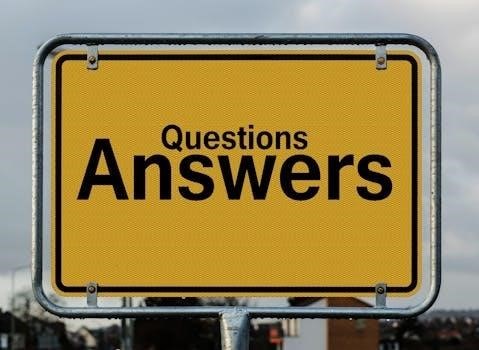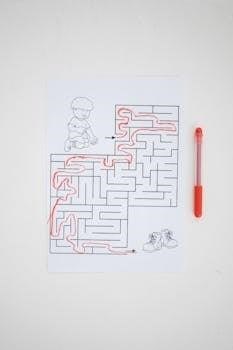possessive nouns worksheets with answers pdf
Master possessive nouns with our killer PDF worksheets! Download, practice, and ace those grammar quizzes. Answers included for easy checking! Get your free possessive nouns worksheets now!
Possessive Nouns Worksheets with Answers PDF⁚ A Comprehensive Guide
Explore the world of possessive nouns with our comprehensive guide. Our worksheets offer a variety of questions to ensure mastery. Each question includes an answer key for easy self-assessment. Free worksheets are readily accessible to make learning convenient and effective!
Possessive nouns indicate ownership or a relationship between one noun and another. They are essential for clear and concise communication. Understanding possessive nouns enhances both writing and comprehension skills. This guide introduces the fundamentals of possessive nouns, explaining their role in sentences. Possessive nouns answer the question, “Whose is it?” or “What does it belong to?”.
We will explore how to form possessive nouns correctly, focusing on singular and plural forms. Singular nouns typically add an apostrophe and “s” (‘s), while plural nouns ending in “s” usually add only an apostrophe (s’). Irregular plural nouns, however, follow different rules, adding both an apostrophe and “s” (‘s).

Mastering possessive nouns can be tricky. This guide provides clear explanations and examples to simplify the concept. By the end, you’ll be able to confidently identify and use possessive nouns in your writing. Practice exercises and worksheets further reinforce learning, ensuring a solid grasp of this important grammatical concept. We’ll also cover common errors and how to correct them, improving your overall grammar skills.
Singular Possessive Nouns⁚ Formation and Examples
Singular possessive nouns show ownership by one person, animal, place, or thing. The most common way to form a singular possessive noun is by adding an apostrophe and the letter “s” (‘s) to the end of the noun. For example, “the boy’s bike” indicates that the bike belongs to the boy. Similarly, “Mary’s cat” shows that the cat belongs to Mary.
Consider the sentence, “The dog’s bone was buried in the yard.” Here, “dog’s” is a singular possessive noun indicating that the bone belongs to the dog. Another example is, “The company’s policy is clearly stated.” In this case, “company’s” shows that the policy belongs to the company.
Even when a singular noun already ends in “s,” you still add an apostrophe and “s” to form the possessive. For instance, “Chris’s car” or “the bus’s route.” Practicing with worksheets helps solidify understanding. Identifying and using singular possessive nouns correctly is a crucial step in mastering English grammar. These examples provide a foundation for further exploration and practice.
Plural Possessive Nouns⁚ Formation and Examples
Plural possessive nouns indicate ownership by more than one person, animal, place, or thing. Forming plural possessive nouns typically involves adding an apostrophe after the “s” if the plural noun already ends in “s.” For instance, “the boys’ bikes” indicates that the bikes belong to multiple boys. Similarly, “the students’ projects” shows that the projects belong to multiple students.
Consider the sentence, “The cats’ toys were scattered around the room.” Here, “cats'” is a plural possessive noun indicating that the toys belong to multiple cats. Another example is, “The companies’ policies vary greatly.” In this case, “companies'” shows that the policies belong to multiple companies.
However, if the plural noun does not end in “s” (irregular plural nouns), you add an apostrophe and “s” (‘s) to form the possessive. For example, “the children’s books” or “the men’s hats.” Practicing with worksheets helps solidify understanding. Identifying and using plural possessive nouns correctly is essential for clear and accurate writing. These examples provide a solid foundation for further learning.
Irregular Plural Possessive Nouns
Irregular plural nouns do not follow the standard rule of adding an “s” to form their plural. Consequently, forming the possessive of these nouns requires a slightly different approach. Unlike regular plural nouns, irregular plural nouns always take an apostrophe and an “s” (‘s) to show possession.
Common examples of irregular plural nouns include “children,” “men,” “women,” “people,” and “teeth.” To make these possessive, you would write “children’s toys,” “men’s hats,” “women’s rights,” “people’s opinions,” and “teeth’s enamel,” respectively. It’s crucial to remember that even though they are plural, they do not end in “s,” hence the need for the apostrophe and “s.”
For example, “The children’s playground was full of laughter.” Here, “children’s” indicates that the playground belongs to the children. Similarly, “The men’s restroom is located down the hall.” In this case, “men’s” shows possession by the men. Understanding and correctly using irregular plural possessive nouns is essential for precise writing. Worksheets can provide targeted practice to master this concept and avoid common errors.
Identifying Possessive Nouns in Sentences
Identifying possessive nouns within sentences is a fundamental skill in grammar, indicating ownership or relationship. Possessive nouns typically end with an apostrophe and either an “s” (‘s) for singular nouns or just an apostrophe (‘) for plural nouns already ending in “s.” However, irregular plural nouns always take an apostrophe and an “s.”
To identify them, look for nouns followed by an apostrophe. For example, in the sentence “The dog’s bone was buried in the yard,” “dog’s” is the possessive noun, showing that the bone belongs to the dog. Similarly, in “The students’ projects were displayed in the hallway,” “students'” is possessive, indicating the projects belong to the students.
Pay attention to context to distinguish possessive nouns from contractions, such as “it’s” (it is). Practice identifying possessive nouns in various sentences through targeted worksheets. These exercises help reinforce understanding and improve accuracy. Correctly identifying possessive nouns enhances comprehension and writing skills. Worksheets provide a structured way to develop proficiency in this essential grammatical concept.
Correcting Errors in Possessive Noun Usage
Mastering possessive nouns involves not only identifying them but also correcting common errors in their usage. A frequent mistake is misplaced apostrophes, such as adding an apostrophe to a regular plural noun that doesn’t denote possession. For instance, writing “The Smiths’ are coming over” is incorrect; it should be “The Smiths are coming over.”
Another error is confusing singular and plural possessives. The singular possessive requires an apostrophe followed by an “s” (e.g., “the dog’s bone”), while a plural possessive typically adds only an apostrophe after the “s” (e.g., “the dogs’ bones”). Irregular plural nouns, like “children,” form the possessive by adding both an apostrophe and an “s” (e.g., “the children’s toys”).
Worksheets designed to correct these errors provide targeted practice. These exercises often include identifying mistakes in phrases, changing phrases to possessive nouns, and converting singular possessives to plural forms. By actively correcting these errors, students reinforce their understanding of possessive noun rules and improve the accuracy of their writing.
Rewriting Sentences Using Possessive Nouns
Rewriting sentences to incorporate possessive nouns is a crucial skill for enhancing clarity and conciseness in writing. This exercise involves transforming phrases that indicate ownership or belonging into possessive noun constructions. The possessive form is typically created by adding an apostrophe and an “s” to singular nouns or just an apostrophe to plural nouns already ending in “s”.
For example, the phrase “the book of the student” can be rewritten using a possessive noun as “the student’s book.” Similarly, “the toys of the children” becomes “the children’s toys.” This transformation not only shortens the sentence but also makes it more direct and engaging.
Worksheets focused on rewriting sentences often present students with a series of sentences using “of” phrases or other constructions to indicate possession. The task is to rewrite each sentence using the correct possessive noun form. This practice reinforces the understanding of possessive noun rules and improves students’ ability to express ownership effectively in their writing. Such exercises are valuable for developing strong grammar and punctuation skills.
Possessive Noun Worksheets for Elementary School Students (Grades 3+)
Possessive noun worksheets designed for elementary school students, particularly those in third grade and above, offer a structured approach to mastering this essential grammar concept. These worksheets typically include a variety of exercises tailored to the learning level of young students. They often start with simple identification tasks, where students are asked to recognize possessive nouns within sentences.

As students progress, the worksheets introduce more complex activities, such as forming possessive nouns from singular and plural nouns. Exercises may involve rewriting sentences to include possessive forms or correcting sentences with incorrect possessive noun usage.
A well-designed worksheet for this age group will incorporate visual aids and relatable examples to keep students engaged. The inclusion of answer keys is crucial, allowing students to self-check their work and learn from any mistakes. These worksheets are an invaluable tool for reinforcing classroom lessons and building a solid foundation in grammar for elementary students.

Possessive Noun Worksheets for 5th Grade
Possessive noun worksheets designed for 5th grade students delve deeper into the complexities of possessive nouns, building upon the foundational knowledge acquired in earlier grades. These worksheets often include exercises that challenge students to differentiate between singular possessive, plural possessive, and irregular plural possessive nouns. Students are expected to apply the correct apostrophe placement in various contexts.
The activities may involve rewriting sentences, correcting errors in possessive noun usage, and even creating their own sentences using specific possessive forms. These worksheets often incorporate more complex sentence structures and vocabulary to align with the 5th-grade curriculum. Furthermore, they might include exercises where students transform phrases into possessive noun constructions, enhancing their understanding of ownership and relationships between nouns.
Answer keys are essential for self-assessment and immediate feedback; By mastering these worksheets, 5th-grade students solidify their understanding of possessive nouns, preparing them for more advanced grammar concepts.
Benefits of Using Possessive Noun Worksheets
Possessive noun worksheets offer numerous advantages for students learning grammar. They provide focused practice, allowing students to concentrate specifically on mastering possessive forms. Worksheets reinforce the rules of apostrophe placement, helping students differentiate between singular, plural, and irregular possessives. Regular practice builds confidence in applying these rules accurately.

Worksheets often include varied exercises, such as identifying possessive nouns, correcting errors, and rewriting sentences, which caters to different learning styles. The structured format of worksheets promotes independent learning, as students can work at their own pace. Answer keys provide immediate feedback, enabling students to identify and correct their mistakes promptly. This instant reinforcement solidifies their understanding and prevents the reinforcement of incorrect habits.
Furthermore, possessive noun worksheets are easily accessible and adaptable. Teachers can tailor worksheets to address specific learning needs or integrate them into broader grammar lessons. The benefits extend to improved writing skills, as students learn to express ownership and relationships clearly and correctly.
Incorporating Possessive Nouns into Spelling and Grammar Activities
Integrating possessive nouns into spelling and grammar activities enhances students’ understanding and application of both concepts. One effective method is to combine spelling lists with grammar rules, encouraging students to create sentences using possessive forms of their spelling words. For example, students could write sentences like, “The cat’s toy is under the bed,” reinforcing both spelling and possessive noun usage.
Another approach is to design activities that require students to identify and correct spelling errors in sentences that also involve possessive nouns. This dual focus promotes careful attention to detail and a deeper understanding of grammatical structures. Furthermore, teachers can use interactive notebook activities to provide explicit practice with possessive nouns. These activities might include foldables or graphic organizers that help students visualize the rules for forming possessives.
By incorporating possessive nouns into broader language arts activities, educators can create engaging and effective learning experiences. This approach not only reinforces grammar rules but also improves students’ overall writing proficiency.
Where to Find Free Possessive Noun Worksheets with Answers PDF
Finding free possessive noun worksheets with answer keys in PDF format is easier than ever, thanks to the wealth of online resources available today. Numerous websites offer printable grammar worksheets suitable for elementary school students and beyond. Educational platforms like K5 Learning provide free grammar and punctuation worksheets, including those focused on possessive nouns, without requiring registration.
Teachers and parents can also explore general educational resource sites that host a variety of language arts materials. These sites often categorize worksheets by grade level, making it simple to find appropriate content for third grade, fifth grade, or other specific levels. Additionally, many teacher blogs and educational websites offer free downloadable worksheets as part of their resources.
When searching, be sure to use specific keywords like “possessive noun worksheets,” “grammar worksheets with answers PDF,” or “free printable grammar exercises.” Always preview the worksheets to ensure they align with the student’s learning needs and that answer keys are included for effective self-assessment. With a little searching, you can discover a treasure trove of valuable resources.

